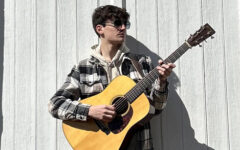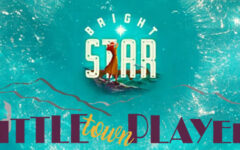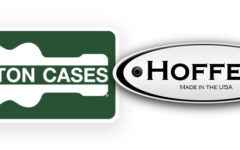 Martin Guitar & Co., probably the most famous guitar manufacturer, celebrates 175 years of production this week, September 9, 1833 being the date on which Christian Friedrich Martin immigrated to New York.
Martin Guitar & Co., probably the most famous guitar manufacturer, celebrates 175 years of production this week, September 9, 1833 being the date on which Christian Friedrich Martin immigrated to New York.
During that same year “Fritz,” as Martin was known, opened a guitar workshop in the loft of 196 Hudson Street, on the Lower East Side, and thus established C F Martin & Company.
For six generations the Martin family, originally from Markneukirchen, Saxony, and now of Nazareth, Pennsylvania, have designed and built guitars, always being innovative and providing the guitars to meet he needs of the day.
The company designed the mighty Dreadnought guitar, introduced in 1916, and this large-bodied guitar became the instrument for the bluegrass guitarist, being well-suited to backing up vocals, fiddles and banjos. Jimmy Martin, followed Clyde Moody, Lester Flatt and Carter Stanley in playing a Martin Dreadnought. Del McCoury, Clarence White, Charlie Waller, Charles Sawtelle, Tony Rice and David Grier continued the line. [This is an adaptation of a history published in ‘British Bluegrass News’ in February 1993.]
However, I don’t want to simply regurgitate a ‘dry’ history about the Martin dynasty. It is after all an oft-told and well-known story.
There is a multi-part history on he C.F. Martin & Company website. Also there was an excellent article by Dave McCarty, himself a Martin guitar player, in the March 2008 edition of Bluegrass Unlimited magazine. Other publications have, or are, marking the occasion with their own stories.
So, I thought that I would ask a few guitarists for their thoughts about Martin guitars and talk about the instruments themselves. Firstly, I questioned Dan Tyminski ….
When did you acquire your first Martin and what model was it?
“Three months after I joined Alison I got a 1946 D28 Herringbone (my first guitar).”
Have you had others since?
“Yes, I have since acquired a 1942 and a 1934 (both Herringbones).”
Did you use the Martin for the recordings for Wheels?
“Yes, for Wheels and ALL other recordings I use my 1946.”
What properties does the Martin have that make it good to use for recording purposes?
“My ’46 is one of those special once in a lifetime guitars that has superior tone in both the high and mid registers with a low end that’s not too boomy. It is dry and airy without a lot of overtones that make most other, seemingly great, guitars difficult to record.”
Blue Highway guitarist Tim Stafford shared his knowledge of Martin guitars …..
“I have two Martins currently, a 1934 D-18 and a 1946 D-28. I’ve owned several in the past. My first one was a 1966 D-28, and I think I bought it in 1988 or so, so I would have been 27.
I use the D-18 for most of my recordings, including Endless Line, although I also used a CA guitar on a few cuts on that record and the most recent Blue Highway project. Haven’t had the D-28 long enough to use!
I guess the name Martin speaks for itself. There is nothing like the tone of that old D-18. It’s sweet and strong, cutting yet deep… perfect for leads like most mahogany models, but full and powerful like the older rosewood guitars. I’ve used it on probably 2 dozen records over the last 6 or 7 years and it’s amazingly consistent. Engineers rave over it–rarely do they need to touch the EQ with that instrument in front of the mic.
I guess the most impressive guitars I’ve ever played have been Martins. I played Ricky Wasson’s 1935 Herringbone on Every Time You Say Goodbye and recently again on a project for Missy Werner. That guitar has the best bluegrass tone I’ve ever witnessed in person.”
James Alan Shelton, of the Clinch Mountain Boys, had this to say ……
“I actually own three Martin guitars – a 1946 D-28 Herringbone, a 1956 D-28 and a 2001 HD-28. In my opinion, you just can’t beat the old Martins for that sweet tone with the volume and punch needed to play bluegrass music. My 1946 D-28 is my favorite guitar that I own and I still take it on the road occasionally. It has everything I need in a great guitar; power, good tone, volume and reliability. Plus it has good intonation, which is a must, for a guitar must play in tune for it to be reliable for stage and studio work. I like a guitar that I can depend on, when I put the ’46 in the mic I know what to expect. I like the D-28s because I need the power of a rosewood guitar as opposed to a mahogany guitar.
Of course all the great bluegrass guitarists down through the years have relied on Martins, so it’s kind of a tradition to own and play one.”
The founder of the Johnson Mountain Boys and guitarist with the Seldom Scene, Dudley Connell also responded to my questions …..
When did you get your first Martin guitar, what model was it and how old were you?
“I bought my first Martin guitar in 1974, when I was eighteen years old. It was a D-35 that I purchased from a Catholic priest. He felt that it was a little disrespectful to play such a fine instrument in front of his congregation while asking for contributions to the church. Unfortunately, that guitar was destroyed during a barroom brawl in Amherst, Massachusetts while on an early tour with the Johnson Mountain Boys. I still have the pieces.”
What Martin guitars do you have presently?
“That guitar was replaced shortly after by a 1974 Martin D-28, purchased from Chris Warner in Hanover, Pennsylvania. I used that instrument on the first three or four Johnson Mountain Boys records. It’s the guitar pictured in the book Honky Tonk by Henry Hornstein; a photograph that was featured in an exhibit at the Smithsonian Museum of American History. I still own that instrument.
The guitar I currently play, and have played and toured with since purchasing it in 1983, is a 1943 D-28 herringbone. I’ve used that guitar on all my recordings since then. I think it has a booming, distinctive sound.”
You are often praised for your rhythm guitar playing, getting a drum-like effect to your sound. What is it about the Martin guitars that respond to your playing in this way?
“Martins are very responsive guitars, with a big and balanced tone, which is why they’re used so much in bluegrass. I like to think that my right hand pushes the rhythm along, anticipating the next beat with different runs and fills. I actually started playing drums when I was a teenager, and like to play with beats and rhythms on the guitar. I also try to compliment what is going on around me, and will approach my right hand technique with the Seldom Scene differently than I would on a Longview performance or recording. I just try and listen and play what fits.”
On a more general level, it has been reckoned that about 95% of all bluegrass guitarists either possess or have aspirations to own a Martin guitar.
Happy Birthday C F Martin & Company. We salute you.
Footnote: September 9, 1894 is also the date that C F Martin III was born.







